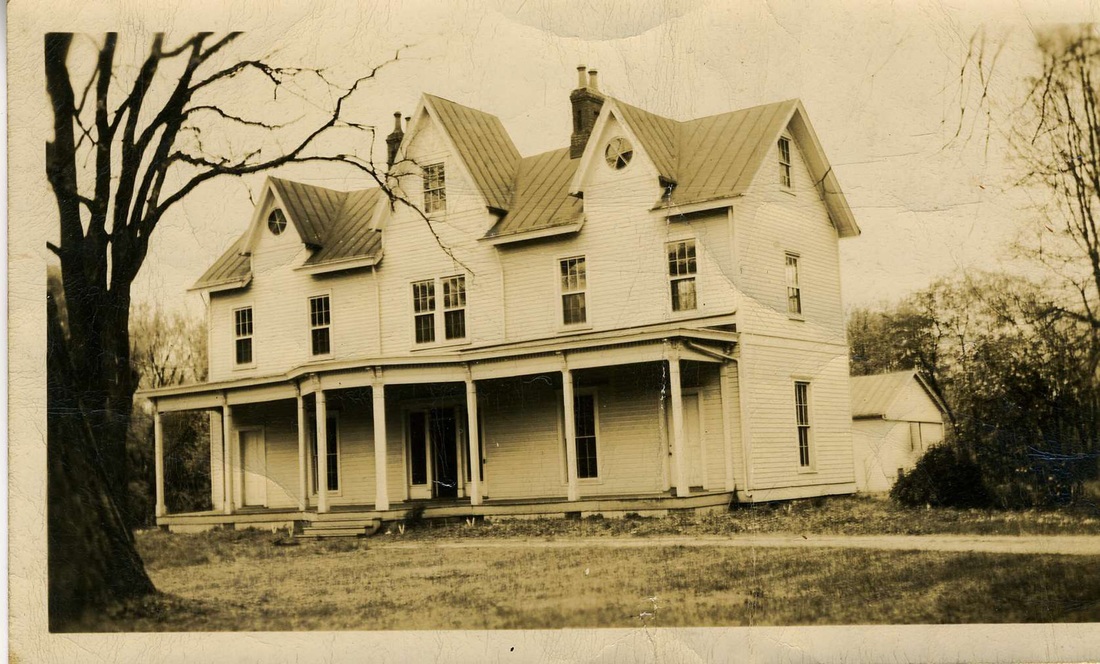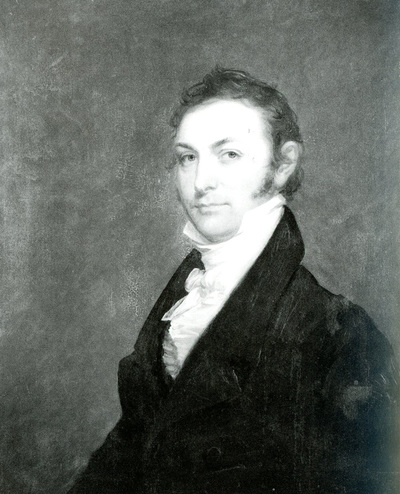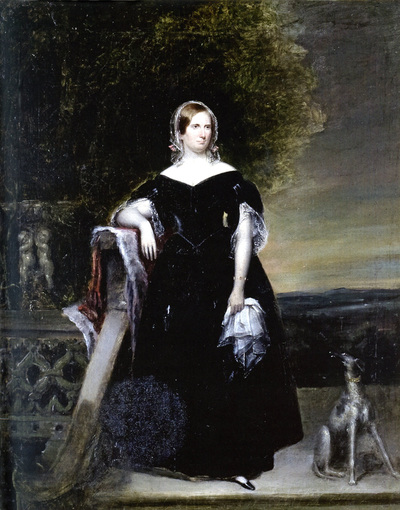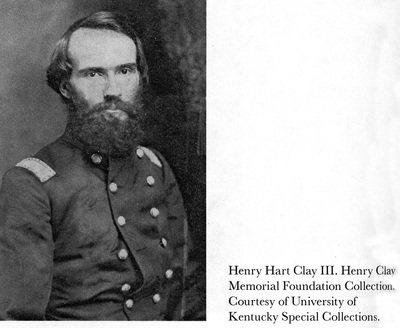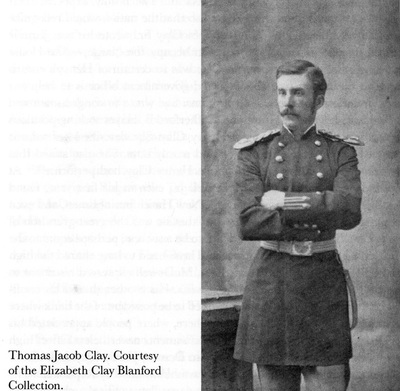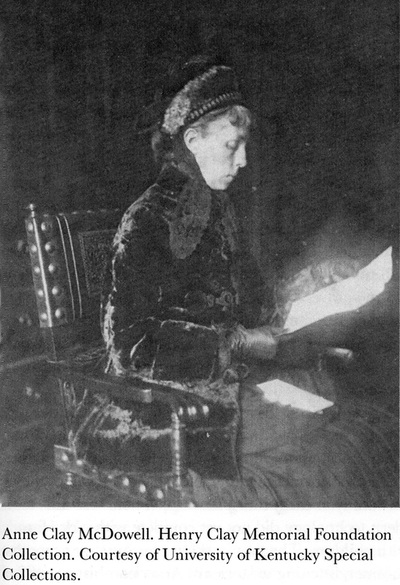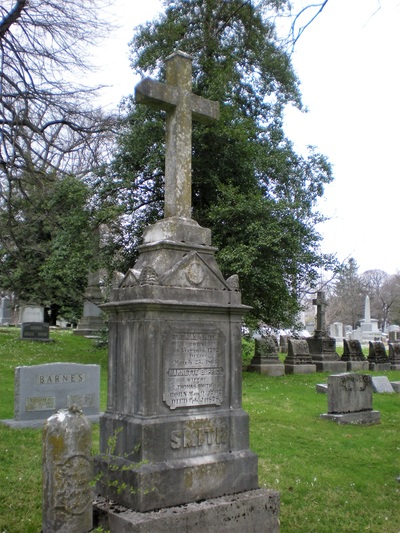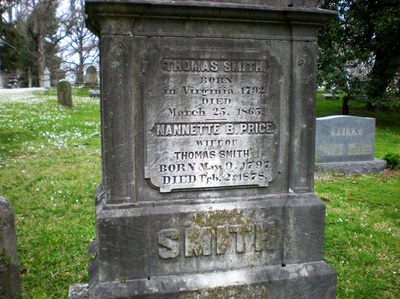Woodside Cottage: Thomas & Nannette Smith Years
Woodside is one of the earliest antebellum residences remaining in Pewee Valley’s Central Avenue Historic District. Built in 1856 for Thomas and Nannette Smith, the house originally sat on a little over eight acres. An article published in the March 19, 1856 edition of the Louisville Democrat noted that the two-story, Gothic Revival home was the first residence visitors glimpsed when they disembarked from the train:
“The first house you perceive is Woodside Cottage, embowered by the tall trees, through which the summer sun steals and falls in broken fragments on the emerald grass.
As you look at its white walls gleaming amid the dark green leaves, you cannot help thinking it was one of the houses built by the fairies in olden times for their especial favorites. Not that it looks in the least antiquated, though, for it was built only a short time ago.”
Woodside is lucky to have survived for more than a century and a half. Many of Pewee Valley’s original wooden structures burned down years ago. In fact, Woodside nearly met a similar fate about a year after it was built, according to the Saturday, November 27, 1858 Daily Democrat, which reported:
Mr. Thos. Smith’s residence in Pewee Valley took fire on Thursday night; but through the strenuous exertions of the neighbors, the fire was extinguished before any great amount of damage was done.
“The first house you perceive is Woodside Cottage, embowered by the tall trees, through which the summer sun steals and falls in broken fragments on the emerald grass.
As you look at its white walls gleaming amid the dark green leaves, you cannot help thinking it was one of the houses built by the fairies in olden times for their especial favorites. Not that it looks in the least antiquated, though, for it was built only a short time ago.”
Woodside is lucky to have survived for more than a century and a half. Many of Pewee Valley’s original wooden structures burned down years ago. In fact, Woodside nearly met a similar fate about a year after it was built, according to the Saturday, November 27, 1858 Daily Democrat, which reported:
Mr. Thos. Smith’s residence in Pewee Valley took fire on Thursday night; but through the strenuous exertions of the neighbors, the fire was extinguished before any great amount of damage was done.
The Thomas and Nannette Price Smith Years
The following information on the Smiths was provided to the National Register of Historic Places by Carol B. Tobe in 1982:
“In 1856, Thomas Marshall, trustee for his sister-in-law, Nannette Smith, purchased an 8-3/4-acre tract for her in Pewee Valley. It was part of the land of Pewee Valley pioneers, Henry and Susannah Smith. The house was probably built soon after…
Nannette Brown Price Smith (1798-1878) was married to Thomas Smith (1787-1866) in 1819. Nannette’s mother, Susannah Hart Price, was the sister of Lucretia (Mrs. Henry) Clay. Thomas Marshall, husband of Nanette’s sister Eliza, was Chief Justice of the Court of Appeals and a teacher at Transylvania University (in Lexington).
Thomas Smith was a Lexington newspaper editor and a prominent man in that city. He purchased the “Kentucky Gazette” in 1809 when he was only 20. After five years, he sold the “Gazette” and joined with his brother-in-law, William Worsley, in publication of the “Reporter....”
... Woodside may have been Smith’s retirement home and several associations suggest why he may have chosen Pewee Valley. Another prominent Lexingtonian, Elisha Warfield, was connected with the railroad and owned property in Pewee Valley. Louisville newspaper publisher Walter Haldeman lived next door to the Thomas Smiths at Edgewood.
“In 1856, Thomas Marshall, trustee for his sister-in-law, Nannette Smith, purchased an 8-3/4-acre tract for her in Pewee Valley. It was part of the land of Pewee Valley pioneers, Henry and Susannah Smith. The house was probably built soon after…
Nannette Brown Price Smith (1798-1878) was married to Thomas Smith (1787-1866) in 1819. Nannette’s mother, Susannah Hart Price, was the sister of Lucretia (Mrs. Henry) Clay. Thomas Marshall, husband of Nanette’s sister Eliza, was Chief Justice of the Court of Appeals and a teacher at Transylvania University (in Lexington).
Thomas Smith was a Lexington newspaper editor and a prominent man in that city. He purchased the “Kentucky Gazette” in 1809 when he was only 20. After five years, he sold the “Gazette” and joined with his brother-in-law, William Worsley, in publication of the “Reporter....”
... Woodside may have been Smith’s retirement home and several associations suggest why he may have chosen Pewee Valley. Another prominent Lexingtonian, Elisha Warfield, was connected with the railroad and owned property in Pewee Valley. Louisville newspaper publisher Walter Haldeman lived next door to the Thomas Smiths at Edgewood.
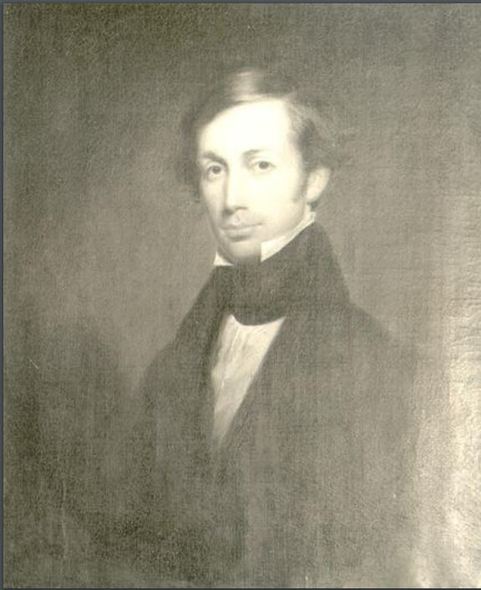 Nannette and Thomas Smith helped raise the children of Henry Clay, Jr. , after his death in 1847 during the Mexican War. Photo taken March 1, 1939, by L.E. Nollan from original portrait of Henry Clay, Jr. at Ashland. Part of the Wilson Family Photographic Collection, ca. 1840-1959
Nannette and Thomas Smith helped raise the children of Henry Clay, Jr. , after his death in 1847 during the Mexican War. Photo taken March 1, 1939, by L.E. Nollan from original portrait of Henry Clay, Jr. at Ashland. Part of the Wilson Family Photographic Collection, ca. 1840-1959
In the 1860 census, Edwin Bryant is listed as living with Thomas and Nanette Smith. Bryant and a partner had purchased the “Reporter” from Smith in 1832 and he was later to manage the “Louisville Dime” with Walter Haldeman.
The Smiths sold Woodside in 1865 but may have continued to live there, or somewhere in Pewee Valley, as Thomas died there in 1866 and Nannette’s will, written in 1877, states that she resides in Pewee Valley. Thomas and Nanette had no children.
Although there is some confusion about the Thomas Smiths’ residence, it is safe to say that they lived, at least for a time, at Woodside. The notes of James A. Miller, who settled in Pewee Valley in 1850, mention that Thomas Smith purchased the property at Muir Lane and the railroad; however, the 1856 Bergman map of Jefferson County has Edwin Bryant located on the Oak Lea property and Thomas Smith at Woodside. In the 1860 census, Bryant and the Smiths were residing together in the same house. The 1879 Beers and Lanagan Atlas identifies the Central Avenue property as Woodside and Woodside is mentioned as the home of Thomas Smith in the 1858 publication “Antiquitates Peweeji.”
James A. Miller’s notes also state that Nannette Smith was the sister of Mrs. Henry Clay and raised the three orphaned children of Henry Clay, Jr. Actually, it was Nanette’s mother who was the sister of Mrs. Henry Clay. The three children of Nanette’s cousin, Henry Clay, Jr., were orphaned. Their mother died in 1840 and their father was killed in the Mexican War in 1847 so it is possible they were raised by Mrs. Smith.
In Miller’s reminiscences he says that the Clay children were Henry, Thomas and Nanette. The boys, he states, were killed in the Civil War and the girl married H.C. McDowell of Louisville, who was later to buy the Clay homestead, Ashland. Clay family history confirms all this. Henry was a Union soldier; Thomas, a Confederate; and both died during the war. The daughter Ann (not Nanette) married Henry Clay McDowell in 1857.
The Smiths sold Woodside in 1865 but may have continued to live there, or somewhere in Pewee Valley, as Thomas died there in 1866 and Nannette’s will, written in 1877, states that she resides in Pewee Valley. Thomas and Nanette had no children.
Although there is some confusion about the Thomas Smiths’ residence, it is safe to say that they lived, at least for a time, at Woodside. The notes of James A. Miller, who settled in Pewee Valley in 1850, mention that Thomas Smith purchased the property at Muir Lane and the railroad; however, the 1856 Bergman map of Jefferson County has Edwin Bryant located on the Oak Lea property and Thomas Smith at Woodside. In the 1860 census, Bryant and the Smiths were residing together in the same house. The 1879 Beers and Lanagan Atlas identifies the Central Avenue property as Woodside and Woodside is mentioned as the home of Thomas Smith in the 1858 publication “Antiquitates Peweeji.”
James A. Miller’s notes also state that Nannette Smith was the sister of Mrs. Henry Clay and raised the three orphaned children of Henry Clay, Jr. Actually, it was Nanette’s mother who was the sister of Mrs. Henry Clay. The three children of Nanette’s cousin, Henry Clay, Jr., were orphaned. Their mother died in 1840 and their father was killed in the Mexican War in 1847 so it is possible they were raised by Mrs. Smith.
In Miller’s reminiscences he says that the Clay children were Henry, Thomas and Nanette. The boys, he states, were killed in the Civil War and the girl married H.C. McDowell of Louisville, who was later to buy the Clay homestead, Ashland. Clay family history confirms all this. Henry was a Union soldier; Thomas, a Confederate; and both died during the war. The daughter Ann (not Nanette) married Henry Clay McDowell in 1857.
The Children of Henry Clay, Jr.
Smith is mentioned specifically as living at Woodside in Noble Butler's 1858 Antiquitates Peweeji, a spoof written to explain how Pewee Valley got its name. In it, he was referred to as "The Merchant;"
Profile of Thomas Smith
Thomas S. Kennedy of Crescent Hill, a descendant of Thomas Smith’s sister, Jane, who married Matthew Kennedy, wrote the following profile of Colonel Thomas Smith of Louisville, Kentucky in 1897:
Thomas Smith was born in Richmond, Va. about 1792. His father was Captain Samuel Smith, a revolutionary officer, who had married Tabitha McLaughlin and resided on Church Hill, near the old Swan Tavern, a famous resort at the time for prominent men; among the number was Chief Justice Marshall, who was a friend and neighbor of Capt. Samuel Smith’s.
Col. Thomas Smith’s twin sister, Rebecca, married William W. Worsley, who in copartnership with Ritchie, edited the “Richmond Enquirer.” In the printing office of the “Enquirer” young Smith learned to be a printer; and in after years, in order to distinguish himself from others of the same name and post office address, he always signed his name, “Thomas Smith (P)” and had all letters to him thus directed. Whenever asked what the “P” stood for, he would with great gusto replay, “for the Printer – Thomas Smith, Printer.”
In about 1810 Thomas Smith’s mother, then a widow, removed with her family … to Lexington, Kentucky…When quite a young man, living in Lexington, Thomas Smith joined the Kentucky troops and fought in the Battle of Raisin River (War of 1812), where the Americans, under Cols. Allen and Lewis and Gen. Winchester were disastrously defeated by the British and Indians in 1813.
Returning from the war, young Smith was employed on the “Lexington Observer & Reporter,” then owned and edited by (his brother-in-law) Mr. Worsley. In a few years, he became associate editor and in 1825, when Mr. Worsley removed to Louisville, Thomas Smith (P) became the proprietor and editor of the “Observer & Reporter.” This weekly newspaper was the personal organ of Henry Clay, whose residence called Ashland was only a short mile from the Courthouse in Lexington. Mr. Smith had married Niss Nanette Price, a sister to the wife of Chief Justice Thomas A. Marshall of the Kentucky Court of Appeals and these sisters were nieces of Mrs. Henry Clay and of Mrs. U.S. Senator Brown and Mrs. Thomas Hart and Mrs. John W. Hunt…The office of the “Observer & Reporter” was in Jordan’s Row and just opposite the eastern side of the courthouse. Mr. Clay always made this office his headquarters when in town and so continued until Mr. Smith sold the newspaper, about in 1838, to Edwin Bryant, a cousin to the poet, W.C. Bryant. Mr. Smith was very kind to Mr. Bryant. He took him to his home when he came to Kentucky, a young man in search of employment; and gave him a position in his office. Mr. Bryant ever after remained with Mr. Smith and lived at his house or made it his home for many years even until his decease in the 1860s. When Mr. Smith removed to Louisville in 1848, Mr. Bryant came also and soon after organized an overland company to California. On arrival at San Francisco, Major Bryant was elected to the office of alcade serving for about a year. He made some fortunate real estate investments in San Francisco; and by leasing the lands he obtained a handsome income and a valuable property. Judge Bryant, as he was familiarly called, returned in 1850 to Louisville, and again made his home with his friend, Col Smith, and fully repaid him for the aid given him when he was a poor boy looking for work. Judge Bryant never married. He was engaged in other newspaper work in Lexington and Louisville.
…Mr. Smith, upon the removal of Mr. Worsley from Lexington, continued the publication of “The Observer & Reporter.”
...All during his life he was ever engaged in building homes and in improving the rural grounds surrounding him. He preferred suburban residences and after planting and plotting the grounds into handsome style, he would sell at a good profit and commence the building up of a new home on a larger and more attractive scale. Thus at Lexington he owned The Villa, a very attractive public resort which he built while he was president of the Lexington and Frankfort railroad…After the Villa…Mr. Smith then bought and improved the Trotter farm which he called Westbrook. Then again he built a cottage home nearly opposite Ashland which he called Woodside where he lived until he removed to Louisville.
Soon after coming to Louisville he made up a party of clever men and bought land about 16 miles from the city of the LC&L railroad. They each built a suburban villa residence. Among the party were Col. Smith and his friend Judge Bryant, W. N. Haldeman of the “Courier-Journal,” W.D. Gallagher, the poet; Prof. Noble Butler, the author and others. The settlement was named Pewee Valley, although it is located on top of a ridge 450 feet above Louisville. There Col. Smith built up and improved three different home places and the settlement is now one of the best and most delightful of all the suburbs about Louisville…
In 1839 Col Smith formed a co-partnership with his brother-in-law, Mr. Matthew Kennedy and his two sons. The commercial firm was styled Kennedy, Smith & Co… and engaged in selling bagging and rope manufactured at the factories in Kentucky, to the cotton planters’ agents at New Orleans, Mobile and Charleston, S.C.; also the firm sold New Orleans sugar…; and they sold coffee imported direct from Rio de Janeiro…
…He died at his residence on Third Street near Kentucky in Louisville and his body was interred in the beautiful cemetery at Lexington, almost under shadow of the splendid monument erected over the earthly remains of his friend, “the great commoner” Henry Clay….
Additional information about Thomas Smith’s life is included in “The Papers of Thomas Jefferson: 1 October 1814 to 31 August 1815” (Princeton University Press, Jan 1, 2012):
Thomas Smith (1792-1865), printer and merchant, was the publisher and editor of the Lexington Kentucky Gazette 1809-1912, and after service in the War of 1812, of the Lexington Kentucky Reporter 1816-1832. He was a director in 1824 of the Transylvania Botanic Garden Company, and he served in 1836 as both a trustee of the Newcastle Female Academy and as a director of the Lexington Fire, Life and Marine Insurance Company. He married a niece of Henry Clay, and the latter entrusted Smith with the publication of his speeches, oversight of some of his financial concerns and promotion of his political career. By 1845, Smith moved to Louisville, where he was a partner in Kennedy, Smith and Company, an agency for selling rope and hemp bagging.
The Smith Monument in Lexington Cemetery
Death of Thomas Smith
Thomas's obituary ran in the March 21, 1866 edition of the Daily Courier:
Death of an Old and Estimable Citizen.
We were grieved yesterday to hear of the death of Mr. Thomas Smith, one of the oldest and best citizens of Louisville. The end event occurred on Monday, at his residence on Third street, near Breckinridge.
Mr. Smith was born in Henrico county, Virginia, near the city of Richmond, in the year 1789. He came to Kentucky when quite a youth, and located at Lexington. Here he became the publisher and editor of the Kentucky Gazette, one of the first papers in Kentucky, and was also at that time, now more than fifty years ago, engaged quite extensively in the publication of books. After he had severed his connection with the Gazette, Mr. Smith joined his brother-in-law, W.W. Worsley, in the publication of the Lexington Observer, which he conducted most successfully a number of years. In 1822 his inclinations prompted him to try agricultural pursuits, but a desire for more active business induced him to come to Louisville about 1838, where he carried a very heavy business for many years, under the firm of Kennedy, Smith & Co. Ever since that period, he has been almost constantly, and more or less actively, engaged in the commercial pursuits of this city. No merchant in Louisville ever sustained a higher character for lofty integrity and high honor than Mr. Smith.
In 1812 he served under General Feine in the campaign when the battle of Raisin River was fought. He proved a faithful and efficient soldier as he always was a good citizen.
Mr. Smith always spoke about his connection with the press of Kentucky with feelings of pride. We remember that during a "strike" of the printers in the COURIER office some 15 years ago, all of Mr. Smith's sympathies were collected in our behalf, and he came to our offices, offered his services, pulled off his coat, took a place at "case," and going to work with a will, set up a number of articles which appeared in the COURIER the next day. This incident affords an index of one of the prominent characteristics which he exhibited through life -- a willingness and desire to serve his friends whenever it was in his power to do so.
Mr. Smith was a connexion of Hon. Henry Clay, and he enjoyed the close friendship and intimate confidence of the great statesman up to the time of his death.
Mr. Smith has been in failing health for two or three years. He has been confined to his room for almost two months, and fully conscious of his condition and in full possession of all his remarkably fine intellectual faculties, he prepared himself to meet the summons of the grim monster whenever it might come. All his life a firm believer in the Christian religion and a constant attendant at the Divine worship, yet he never united himself to the church, until a few weeks before his death, when he became a communicant of Christ Church. He died in the full hope of a blissful hereafter.
In the family and social circle Mr. Smith was a magnificent specimen of the true old Virginia and Kentucky gentleman. Of remarkably fine intellectual powers, well read and very observing, he was a most interesting companion and entertaining and instructive conversationalist. With a tender and kind heart, he was every ready to sympathize with his friends in their trials, or rejoice with them in their triumphs. He was liberal, generous and hospitable -- a good man -- in the fullest sense of the word -- and it is with unfeigned sorrow the breaking of the links that bind us with such pleasant memories to the past.
Death of an Old and Estimable Citizen.
We were grieved yesterday to hear of the death of Mr. Thomas Smith, one of the oldest and best citizens of Louisville. The end event occurred on Monday, at his residence on Third street, near Breckinridge.
Mr. Smith was born in Henrico county, Virginia, near the city of Richmond, in the year 1789. He came to Kentucky when quite a youth, and located at Lexington. Here he became the publisher and editor of the Kentucky Gazette, one of the first papers in Kentucky, and was also at that time, now more than fifty years ago, engaged quite extensively in the publication of books. After he had severed his connection with the Gazette, Mr. Smith joined his brother-in-law, W.W. Worsley, in the publication of the Lexington Observer, which he conducted most successfully a number of years. In 1822 his inclinations prompted him to try agricultural pursuits, but a desire for more active business induced him to come to Louisville about 1838, where he carried a very heavy business for many years, under the firm of Kennedy, Smith & Co. Ever since that period, he has been almost constantly, and more or less actively, engaged in the commercial pursuits of this city. No merchant in Louisville ever sustained a higher character for lofty integrity and high honor than Mr. Smith.
In 1812 he served under General Feine in the campaign when the battle of Raisin River was fought. He proved a faithful and efficient soldier as he always was a good citizen.
Mr. Smith always spoke about his connection with the press of Kentucky with feelings of pride. We remember that during a "strike" of the printers in the COURIER office some 15 years ago, all of Mr. Smith's sympathies were collected in our behalf, and he came to our offices, offered his services, pulled off his coat, took a place at "case," and going to work with a will, set up a number of articles which appeared in the COURIER the next day. This incident affords an index of one of the prominent characteristics which he exhibited through life -- a willingness and desire to serve his friends whenever it was in his power to do so.
Mr. Smith was a connexion of Hon. Henry Clay, and he enjoyed the close friendship and intimate confidence of the great statesman up to the time of his death.
Mr. Smith has been in failing health for two or three years. He has been confined to his room for almost two months, and fully conscious of his condition and in full possession of all his remarkably fine intellectual faculties, he prepared himself to meet the summons of the grim monster whenever it might come. All his life a firm believer in the Christian religion and a constant attendant at the Divine worship, yet he never united himself to the church, until a few weeks before his death, when he became a communicant of Christ Church. He died in the full hope of a blissful hereafter.
In the family and social circle Mr. Smith was a magnificent specimen of the true old Virginia and Kentucky gentleman. Of remarkably fine intellectual powers, well read and very observing, he was a most interesting companion and entertaining and instructive conversationalist. With a tender and kind heart, he was every ready to sympathize with his friends in their trials, or rejoice with them in their triumphs. He was liberal, generous and hospitable -- a good man -- in the fullest sense of the word -- and it is with unfeigned sorrow the breaking of the links that bind us with such pleasant memories to the past.
Nannette's War Efforts During the War of 1912 and Civil War
During the Civil War, Nannette actively supported the North. In October, 1861, she helped organize the Ladies Soldiers Relief Association to provide “winter comforts” for Kentucky’s Union forces. Nannette became president and Mrs. Bland Ballard secretary. An invitation to attend the organization’s first fundraiser ran in the November 1, 1861 edition of the Louisville Democrat:
Ladies' Soldiers' Relief Association.
We are requested by Mrs. Nannette Smith, Moderator of the above charitable institution, to state that an adjourned meeting will be held at the Court-house, in the east room, Friday evening, Nov. 1st, at 7 o'clock. The loyal women cf the city are expected to turn out by the thousand, and bring with them one or two gentlemen at least one gentleman to each lady each gentleman to be provided with as much cash as his circumstances will permit him to donate to the truly noble objects of this charity. A new hospital has been opened at the corner of Broadway and Eighth streets (editor’s note: the United States General Hospital) , where there are already quite a number of soldiers sick and suffering. Let the ladies be punctual, and each take an escort well-armed with money or other valuable aid.
Nannette had exhibited similar patriotic zeal nearly 50 years earlier, during the War of 1812, according to this story which ran in the the Louisville Daily Journal on November 22, 1861:
Charity is a beautiful and perennial flower in a woman’s heart. It buds open in her girlhood and its full expansion adds fragrance to her maturer years, as incense casts holy odor around a cathedral. We have heard an incident which illustrates this. Nearly half a century since we were at war, and the women of Kentucky were then engaged as they are now in the noble work of providing clothing and other necessities for the volunteers of the State fighting in the northern frontier. One of these patriotic women – a young girl named Miss Nannette Price – among other articles, made a shirt which came into the possession of a young soldier, and was worn by him at the Battle of the Raisin and Dudley’s defeat. The wearer of the gift survived the disastrous fight and was reserved to become a prominent statesman in the councils of the nation, while the donor in the course of time became a matron. Yet both live, are inperfect health, and after the lapse of years are still engaged in deeds of charity and loyalty. The donor of the gift is Mrs. Nannette Smith, the Presidentess of the Woman’s Relief Association for the city of Louisville, and its young recipient is now the Hon. Joseph R. Underwood. Time, which has stolen their years away, has not impaired the charity of one nor the loyalty of the other; the girl of 1813 is now engaged again in the holy work of charity and the boy volunteer on the Raisin is now one of the most zealous champions of the Union cause in our State, the Nestor of its Legislature, and the Mentor to guide his fellow-citizens. The romance that gathers around these circumstances is still further enhanced by the fact that Judge Underwood has always preserved the gift of Mrs. Smith as a prized momento, and it might now do duty again if it were not that his home in Bowling Green was taken possession of by the rebels while he was attending to his Legislative duties last September, and he has since then been unable to return there. It may be that the gift of the young Nannie Price has been desecrated by ruffians under Buckner and now is worn by some rebel. If so, we hope it will be invested with the qualities of the Centaur’s shirt and “fester him to madness.”
Nannette outlived her husband by almost 12 years. She died in Louisville in February 1878 and her obituary ran in the February 4, 1878 edition of the Courier-Journal:
The funeral service of Mrs. Nannette B. Smith was held yesterday at her late residence on Walnut? street. Rev. Dr. Craik....
Related Links

